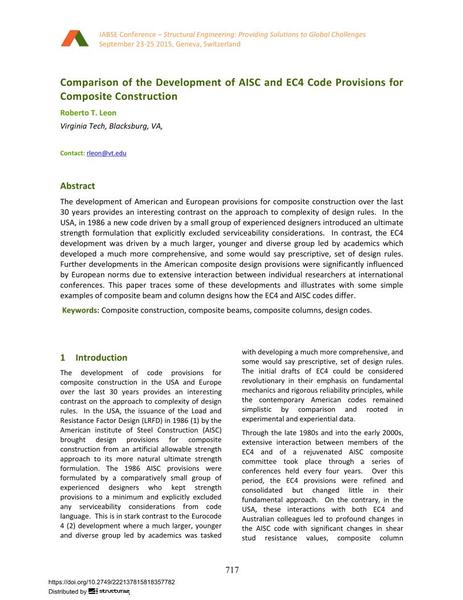Comparison of the Development of AISC and EC4 Code Provisions for Composite Construction

|
|
|||||||||||
Bibliografische Angaben
| Autor(en): |
Roberto T. leon
(Virginia Tech, Blacksburg, VA,)
|
||||
|---|---|---|---|---|---|
| Medium: | Tagungsbeitrag | ||||
| Sprache(n): | Englisch | ||||
| Tagung: | IABSE Conference: Structural Engineering: Providing Solutions to Global Challenges, Geneva, Switzerland, September 2015 | ||||
| Veröffentlicht in: | IABSE Conference Geneva 2015 | ||||
|
|||||
| Seite(n): | 717-724 | ||||
| Anzahl der Seiten (im PDF): | 8 | ||||
| Jahr: | 2015 | ||||
| DOI: | 10.2749/222137815818357782 | ||||
| Abstrakt: |
The development of American and European provisions for composite construction over the last 30 years provides an interesting contrast on the approach to complexity of design rules. In the USA, in 1986 a new code driven by a small group of experienced designers introduced an ultimate strength formulation that explicitly excluded serviceability considerations. In contrast, the EC4 development was driven by a much larger, younger and diverse group led by academics which developed a much more comprehensive, and some would say prescriptive, set of design rules. Further developments in the American composite design provisions were significantly influenced by European norms due to extensive interaction between individual researchers at international conferences. This paper traces some of these developments and illustrates with some simple examples of composite beam and column designs how the EC4 and AISC codes differ. |
||||
| Stichwörter: |
Verbundstützen Verbundbau Bemessungsnormen Verbundträger
|
||||
